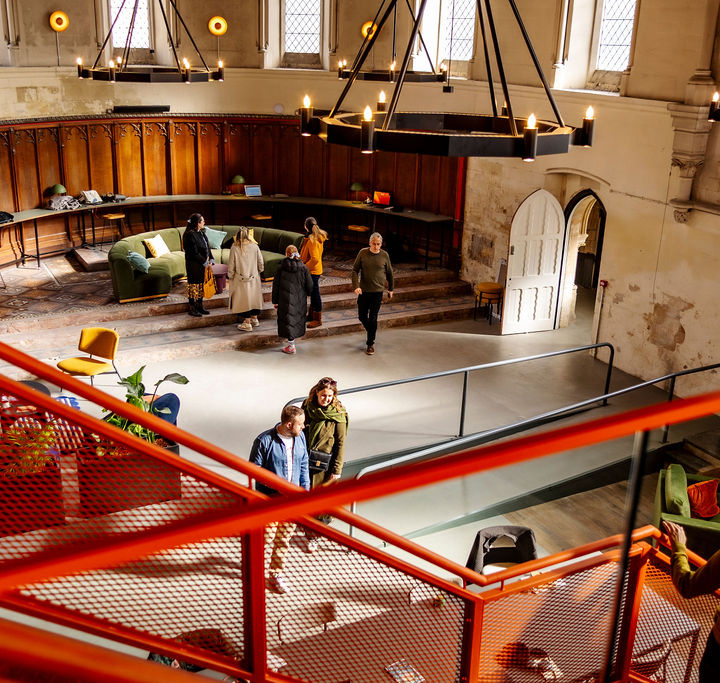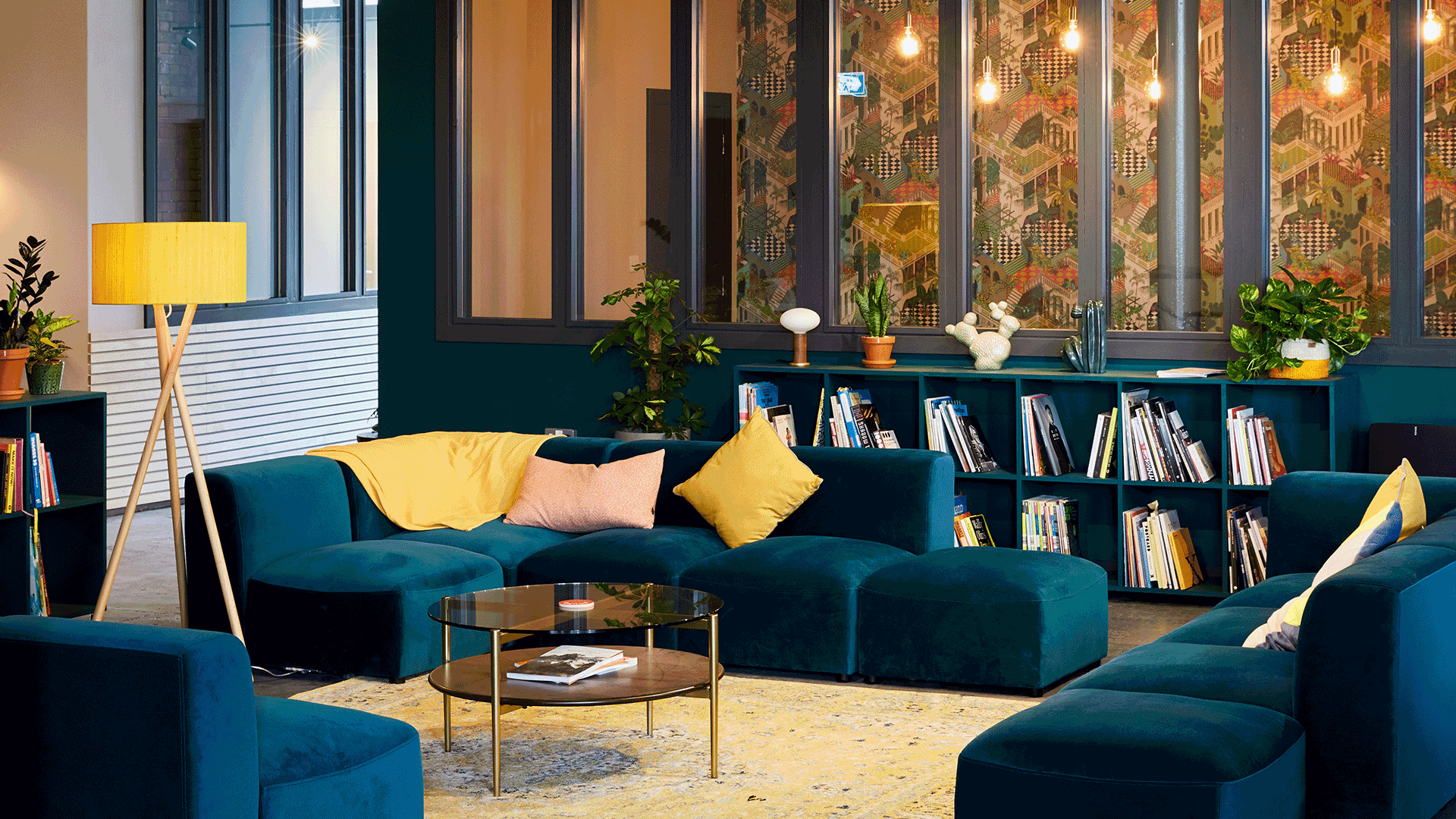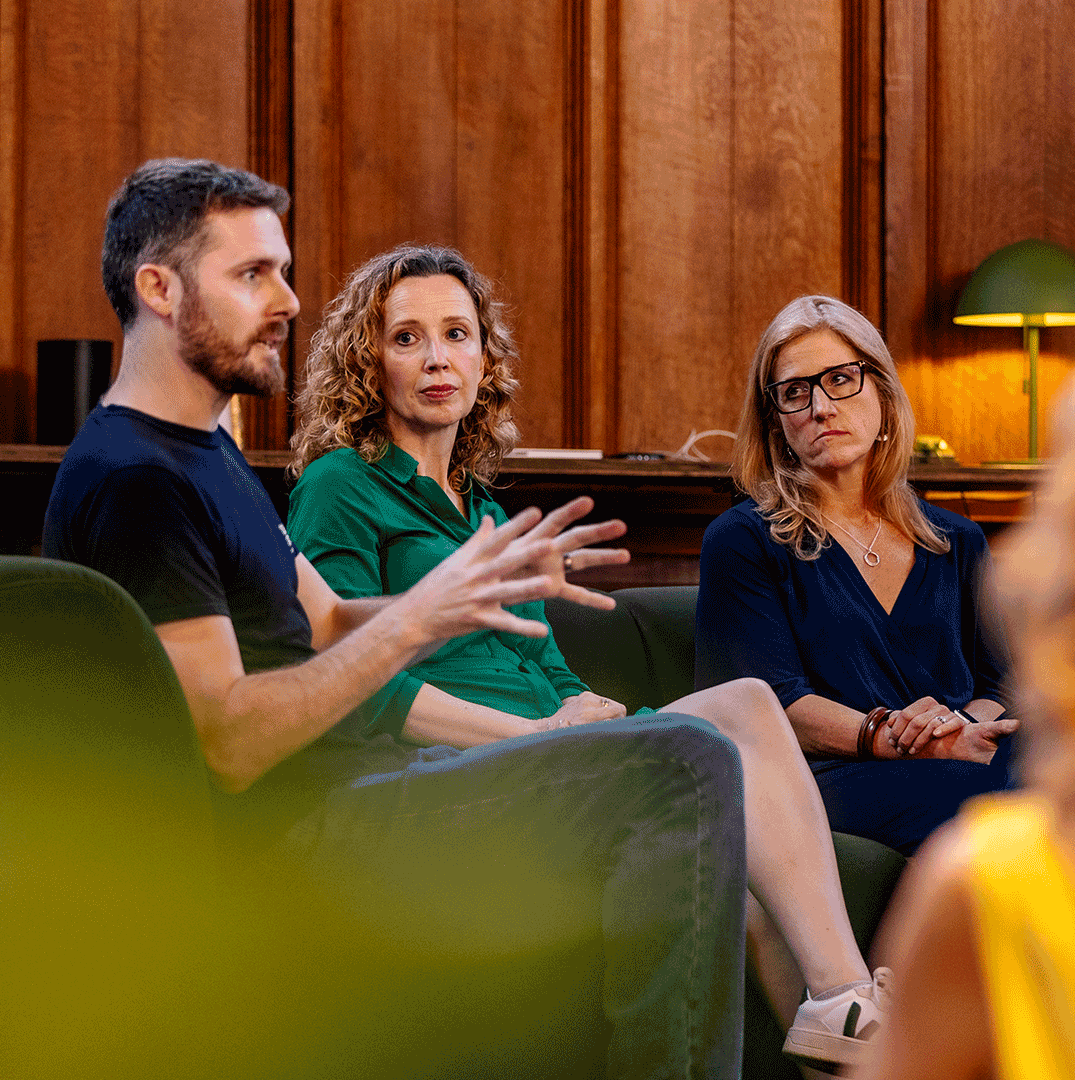

Centre • Bath
Breakfast
Talks
Socials
Run Club
Crafts
Music Events
Summer Party
For Hire
Breakfast
Talks
Socials
Run Club
Crafts
Music Events
Summer Party
For Hire
Breakfast
Talks
Socials
Run Club
Crafts
Music Events
Summer Party
For Hire
Breakfast
Talks
Socials
Run Club
Crafts
Music Events
Summer Party
For Hire
Breakfast
Talks
Socials
Run Club
Crafts
Music Events
Summer Party
For Hire
Breakfast
Talks
Socials
Run Club
Crafts
Music Events
Summer Party
For Hire

How much does our physical environment impact our productivity at work? Lighting, temperature, air quality: there have been numerous studies revealing attention-to-detail in these areas will not only increase productivity, but employee wellbeing, too. But yet, the blueprint for the modern office still results in standardised open plan spaces. This may prove sufficient for corporate firms, but what about creative businesses and agencies?
For Ben Steers and Jason Smith, the founders of Bristol-based creative studio Fiasco Design, these typical offices were too sterile for their business, but the creative workspaces on offer were too often ill-conceived attempts to be ‘fun’ and ‘casual’. “We were looking for a work environment built around the needs of creative practices, but repeatedly found office space that had been retrofitted with ‘quirk’ – think bean bags and table tennis tables,” explains Ben. “Spaces that paid lip service to the creative industries without due care and attention to the details.”
When the next step of growing their successful design studio led them to review new office spaces in 2017, they found themselves “cold and uninspired”. “We thought, well if we feel this way, we can’t be alone. So we started to explore the market further, visiting co-workspaces in Bristol, London and Manchester, but had little success in finding a real community space.”
Fast forward to the present, and Gather Round is now a fully-functioning creative co-working space, home to a whole variety of creative agencies, businesses and freelancers. With half of the UK workforce expected to be self-employed freelancers by the end of 2020, we asked co-founder Ben to draw on his experience and explain how you can create a new blueprint for the creative workspaces of the future.
Use human-centric design
Distill the habits, movements and activities of the people using the space into work patterns and scenarios. For employees of a business, these working patterns may be determined by job roles and company culture. But what did a productive work environment look like for the growing number of independent creatives and freelancers?
“In my opinion, what differentiates the creative industries from many other industries is that it’s a lifestyle, rather than a traditional 9 to 5,” explains Ben. “It requires a different set of skills based on creative thinking and an individual’s circadian rhythms.” A productive workspace for creatives should recognise this, giving individuals the flexibility to move around different environments and work at different times in order to get the most from them.
Find the balance between creative stimulation and focus
”There are times where you’ll want a space to get loose and throw ideas around in,” explains Ben, “but there’ll also be times where you want to bring clients in and have a more professional setting, or sit somewhere quiet with limited distractions to focus.” Considering, 82% of UK employees think quiet areas are essential, and 75% say social spaces can improve their wellbeing at work, moving away from homogenised design to create a variety of spaces will better serve different functions, and support different outlets.
To find this balance, Ben explains why this necessitated roughly splitting the Gather Round space in two. “The front area of the space is designed to be more communal, integrating the open co-working desk area, kitchen and lounge. This is where there is more hustle and bustle, more activity. Then we have the quiet quarter at the rear of the space, which, as it sounds, is intended for those who want to get their heads down and focus. This area is light and surrounded by plants, which creates a relaxed, tranquil feel.”
Be inspired
“The key for us was to create a space that was as far away as you could get from a typical ‘office’,” says Ben. “Inspiration for the design of the Gather Round interior came from far and wide – from New York loft apartments and studio flats, to restaurants and hotels. ”When you set out to create a space, think about the wider cultural influences the people using the space will relate to. In current interior design trends for hotels and restaurants, the departure from cookie-cutter chain models towards spaces with individuality are each inspired by their unique location, purpose and audience.
But what about offices? The influence of Silicon Valley has pioneered a new approach to office design, one which encourages collaborative and creative ways of working. But it’s not just about offering novel and gimmicky features or perks – it’s about creating spaces with employees in mind. For inspiration, take a look at architecture and interior design firm Penson’s completed workplace projects for the likes of Sony Playstation, UKTV and Expedia: hyper-design driven spaces created to meet the needs of employees.

Consider key collaborative design features
Successful creative hubs actively encourage the exchange of ideas and new ways of thinking, and any new workspace should establish a focal point around which people can gather in conversation. In Gather Round, this materialised into a large family dining table which was designed to encourage big groups eating together.
“The ritual of lunch and eating together is really powerful and a great way of building meaningful relationships,” explains Ben. “This has worked really well in this respect and acts as a central gathering space for lunches and events.”
Offer effective facilities, tools and resources they will actually appreciate
To attract and retain a creative community, the space can’t just look beautiful, it needs to be fully functional and equipped for the flexibility of digital working, too. From individual Wi-Fi hubs for studios, residents, flexi-members and guests, Google Chromecast in the board meeting room and an easy-to-use coffee machine, Gather Round didn’t scrimp where top priorities for creative freelancers were concerned.
Build a positive community around shared values
A well-considered space won’t only deliver value for freelancing creatives in design and functionality, but promote wellbeing through a positive community. In 2018, 48% of UK-based freelancers describe their working life as ‘lonely’. While design and functionality were paramount in the build of Gather Round, Community Manager Megan reveals that self-employed member’s motivation to join are almost always community-based: “Feeling part of a larger community is top priority for 99% of freelancers who get in touch with us. But it takes time to build a genuine community, you can’t force people together and expect everyone to get on – it has to happen organically and there’s definitely a knack to getting this right,” she explains. “This is why our events programme is so important, as it brings members together in meaningful ways. Friendships start to flourish and genuine connections are formed – but you have to continue to nurture this. We do this by listening to our community, always! “
Central to the Gather Round mission was the opportunity to build a new community, and Ben explains how to get the foundations right for yours, too. “In order for a space to feel comfortable and secure for its users, you need to create a value system and culture built on trust and respect. If you create an environment based on these two things then what you will naturally see is a greater sense of togetherness and community.”
Feeling inspired? If you want to find out more about the Gather Round space, you can get in touch with the team at hello@gatheround.co.


With a thriving and active community of like-minded individuals, we’re more than just a place to work. Discover our private studios and shared spaces in Bristol and Bath

Our unique and varied spaces in Bristol and Bath cater for keynotes, networking, workshops, rehearsals and much more.
Find out more
Your specialist delivery avian is now in transit. We’ll be in touch when he reaches us.